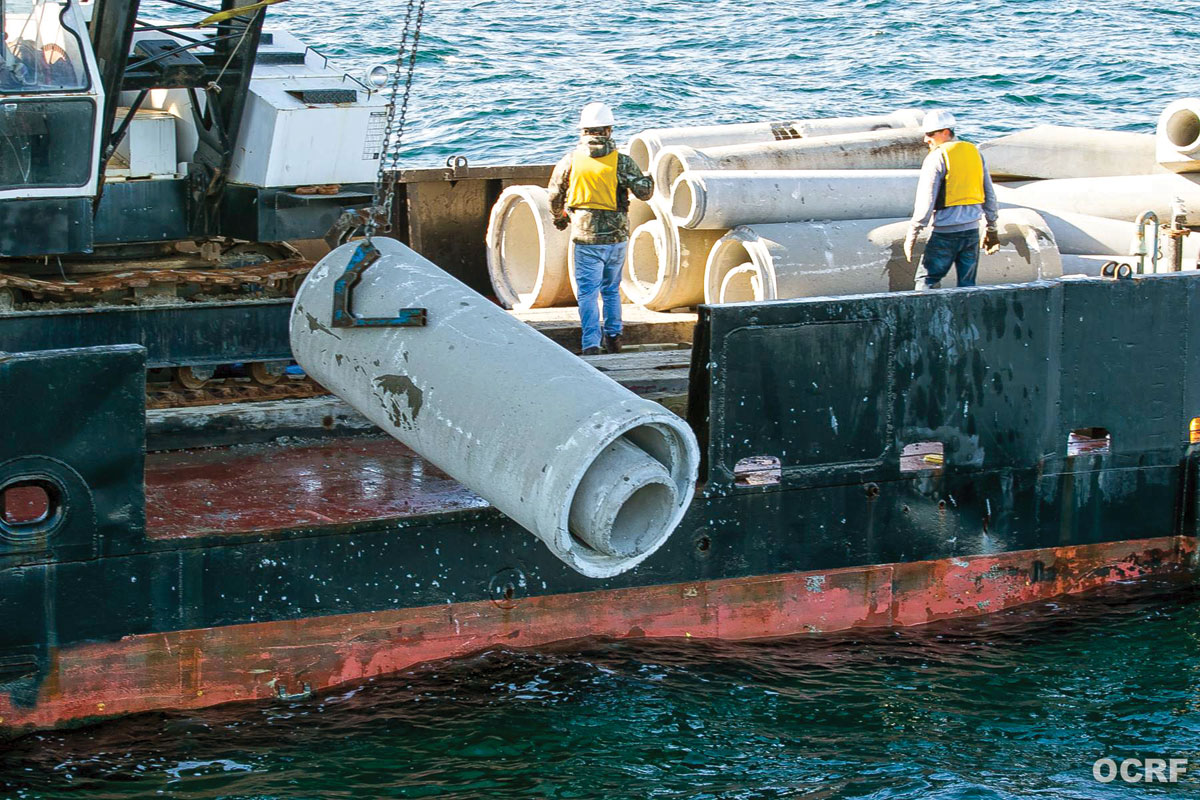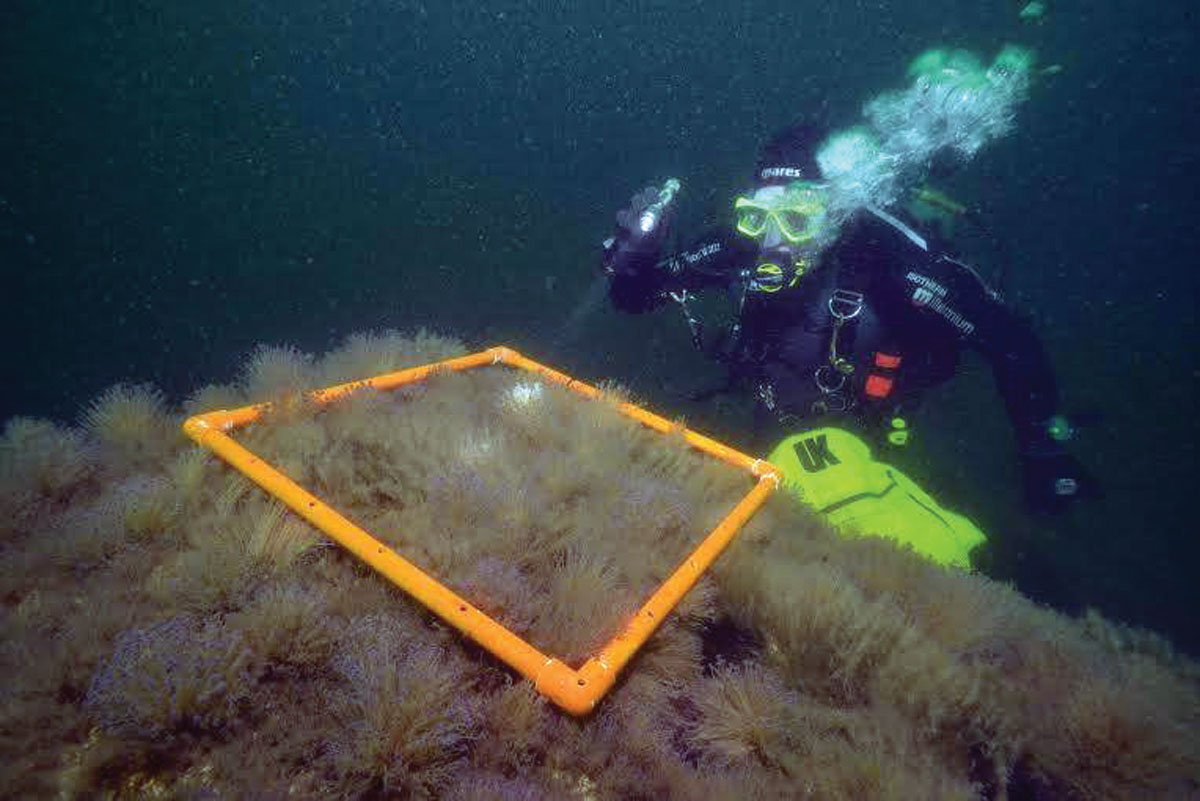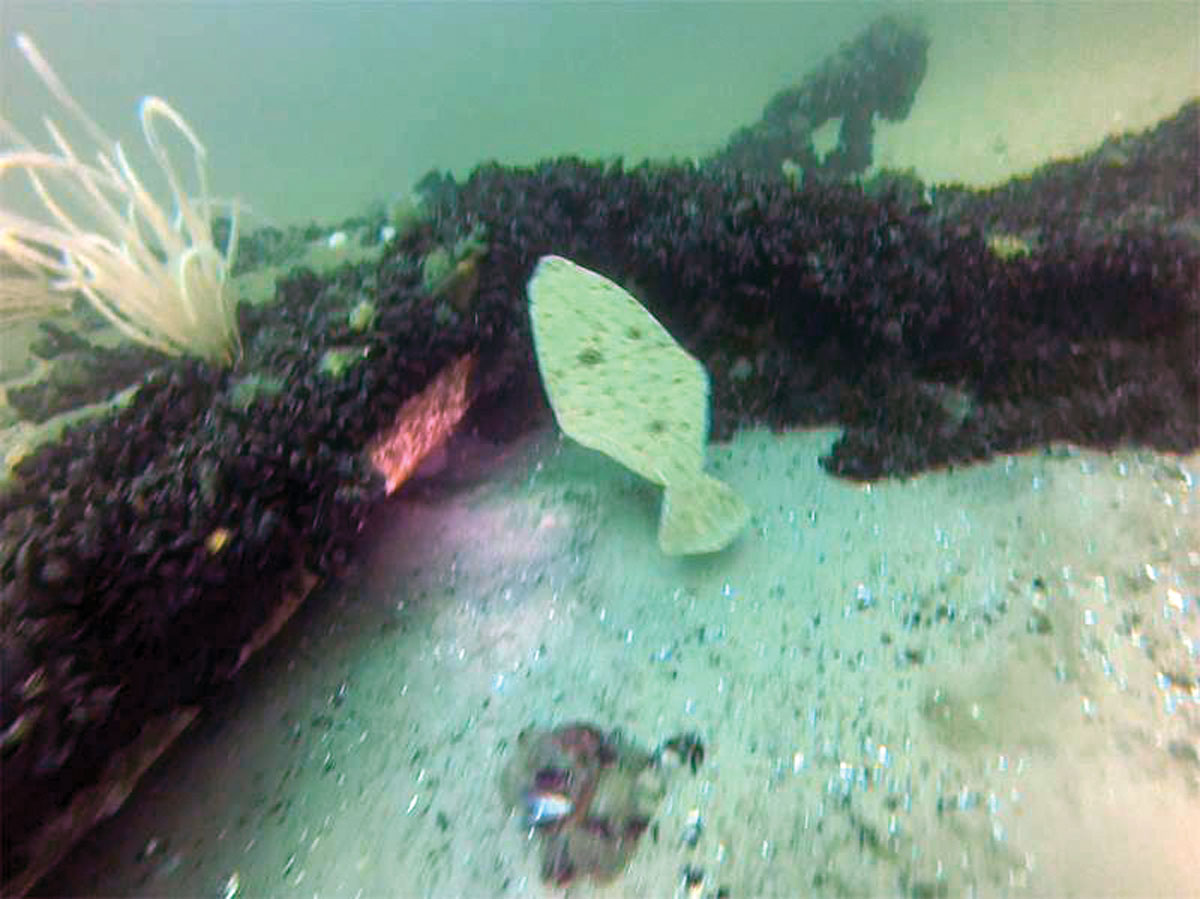Why do we need to have reef building efforts along the DelMarVa coast? After World War II, surplus diesel engines and even boats were cheap as Uncle Sam looked to reduce inventory. Post-1950 stern-towed gear impacts to ocean seafloor habitats must have been the greatest in history, as boats powered by these surplus engines were put to sea. Habitat loss grew worse as LORAN C navigation became widespread in the 1970s. Where once an area would have been steered clear of altogether by skippers operating towed fishing gear, as more precise navigation became possible, stern-towed gear was pulled as closely as possible to any remaining hardbottom habitats. Where a cluster of boulder was previously avoided at all costs because it would snag towed gear, it was also true that very close to those rocks were fish to be harvested.

By 1980 if seafloor habitat out to 100 fathoms held fish or shellfish and could be towed, it was towed. And if towing damaged or destroyed that habitat either temporarily or permanently, at least there was a paycheck in it before production was lost. Consider: there were more sea bass landed from 1950 to 1961 than in all the years since combined.
Throughout the fisheries restoration community even today, no recognition exists for Mid-Atlantic seafloor habitat, and especially not for any loss of such habitat. Absent any knowledge of habitat, management today cannot apply Nielsen and Lackey’s (fisheries scientists who literally wrote the textbook on fisheries management) commonsense restoration philosophy: “Artificial spawning structures may be necessary because of deterioration of natural spawning grounds,” because no recognition exists that we ever benefited from spawning occurring upon those now long-lost habitats, or “spawning structures.”
My experience has been rather different. I believe every artificial reef ever built off the DelMarVa coast, or any area of natural reef that has ever re-grown after storm or commercial gear impact, has contributed to reef-fish production. Each and every one. I believe fish cannot tell the difference between naturally exposed rock on the seabed and rock humans have dropped to the seabed. Fisheries production occurring on natural reef is identical to that of an artificial reef, given an equally exposed surface area suitable for growth of hard-substrate colonizing animals such as corals, mussels, and fish.
In other words, when considered by cubic measure, so far as fish are concerned, reef is reef is reef.

I believe what we’re actually looking at is habitat production and a demonstration of regulation’s power over habitat’s finite output. Spawning site fidelity is extreme in sea bass. They’re also really good at colonizing new habitat. Sea bass, as seems everywhere in biology, are driven to fill any ‘open’ habitat. Reproduction is shown to change in response to population and the available resources; there is a perception of habitat capacity in play. And age at maturity can be controlled.
We’ve had bigger females since 2001 than scientists 40 years ago believed even existed, Yet after an initial surge during early management, we’ve experienced no spawning increase. But adding more spawners via adding more and younger year classes? POW! A re-enlivenment of production. My argument for manipulating sea bass production has depended on tricking them into thinking there’s still plenty of room and resources in the ocean. We had better sea bass spawning production when, even after just a few months of life, all sea bass were in the spawning class.
We can do this by building places where fish gather for protection, to feed, and grow to maturity, and adding to spawning habitat has helped enormously with keeping our fisheries viable. Each reef in existence, no matter whether natural, accidental, or artificial, is part of an important bioeconomic engine. Each new reef we build bolsters that engine’s power.

Managers of today, people working incredibly hard to leave a legacy of improved fisheries, see themselves as having three tools: size limit, creel and quota limits, and seasons. True advances in fisheries will come when those tools are recognized for their role in managing for increased spawning production. Which requires spawning habitat.
“But, But!” NOAA cries, “We use the best available catch estimate science to discover overfishing.”
There was a time when taking mercury, bloodletting, and lobotomy were all thought the newest wonder-cures in science. Even tobacco, LSD, and thalidomide were once touted as good things with the “best available science.” And in 2016 this “science” says that Maryland’s largest and greatest sea bass landings came from shore. That’s not science at all, it’s just plain wrong. Note: since this article was originally published many more examples of flawed data has come to light. In fact, in 2023 NOAA admitted there could be errors in the MRIP numbers to the tune of 40 percent or more. And that's just what they admitted to.
Habitat is brutally important. Sea bass are reef fish. A “reef” is essentially a rock or rocky area or any simulation where growth occurs. When sea bass find such a place they put up a high-def TV and make it home. They flee cold water come late fall and return to that exact spot come spring — to spawn. That’s habitat production. It is spatially finite and can be managed.
Management of today, as with doctors who once prescribed lobotomy, risks killing the patient. I’ll tell all who will read: the sea bass fishery is being squandered. Management must learn to use every tool at its disposal to enliven spawning production. All tools useful to regulating harvest are as nothing when there is no population from which to catch.
Editor’s note: Capt. Hawkins is a driving force behind the Ocean City Reef Foundation, a 501(c)(3) organization which has been building and enhancing reefs off the coast since 1997. For a mere $50 donation they’ll send you charts—including GPS coordinates—of all the reefs the Foundation has worked on (which basically includes all the reef sites within shooting distance of the inlet). Aside from your free copy of FishTalk, this is the best fishing deal on the face of the planet.
Capt. Monty Hawkins runs the Morning Star, and is a well-respected authority on reefs and bottom fishing off the DelMarVa Peninsula. This excerpt was originally published on his web site.
This article was originally published in 2017 and was last updated in June of 2024.